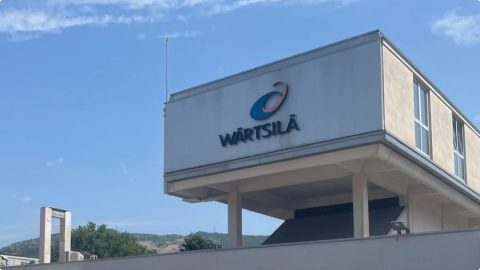Hupac Group recovers Rastatt and low Rhine losses

Hupac Group witnessed an increase of traffic volumes by 21.4 per cent last year. The recovery of traffic losses due to the Rhine disruption in 2017, the Rastatt disaster and the acquisition of ERS Railways in June 2018 were cited as key growth factors.
In 2018 the Swiss intermodal transport operator carried 926,414 road consignments or 1,720 thousand TEUs. These were 163 thousand road consignments more than in the previous year. Non-transalpine traffic showed the most dynamic development with an increase of just under 38 per cent.
Non-transalpine
Rail traffic that did not pass the Alps amounted to 251,870 consigments last year. This was 98 thousand trips more than the previous year. This was almost exclusively attributable to the volumes of operator ERS Railways, which was integrated into the Hupac Group in June 2018 . The operator contributed to the overall result with about 92 thousand train journeys.
ERS Railways, with its operational headquarters in Hamburg, specialises in maritime hinterland services and thus complements the portfolio of Hupac with its traditional focus on continental traffic. ERS offers connections between the North Sea ports and numerous destinations in Germany as well as supplementary services such as port connection traffic, local delivery and customs procedures.
The expansion of the network to the western ports by exploiting synergies with Hupac Intermodal is in the development phase. “We have achieved important successes with ERS Railways; the entire Hupac Group benefits from this”, commented Bernhard Kunz, CEO of the Hupac Group.
Transalpine traffic
Transalpine traffic through Switzerland also developed positively. Compared to the previous year, Hupac Intermodal was able to shift 67 thousand additional road consignments to railways, which corresponds to an increase of 14.4 per cent. The majority of these trips were via Switzerland, accounting for 535,777 trains. Via Asutria and France, another 38,767 journeys were made.
Almost half of total transalpine traffic is attributable to the recovery of volume losses due to the seven-week blockade of the Rhine valley route in August/September 2017. Revised the Rastatt effect, traffic volumes in transalpine traffic through Switzerland increased by about 8 per cent. Growth was again driven by the semi-trailer segment. These services are currently routed via the Simplon axis to the Novara terminal.
Future
The furture looks positive for Hupac Group. The opening of the 4-metre corridor via the Gotthard Base Tunnel and the connection of the Busto Arsizio-Gallarate terminal at the end of 2020 will create new opportunities for the shift to rail.
In 2019 Hupac expects transport demand to stabilise as a result of the economic downturn. “Now is the time to focus on the quality of the services,” emphasises Michail Stahlhut, director of Hupac Intermodal. “We must ensure a stable environment on which new growth can be built.”
You just read one of our premium articles free of charge
Want full access? Take advantage of our exclusive offer






